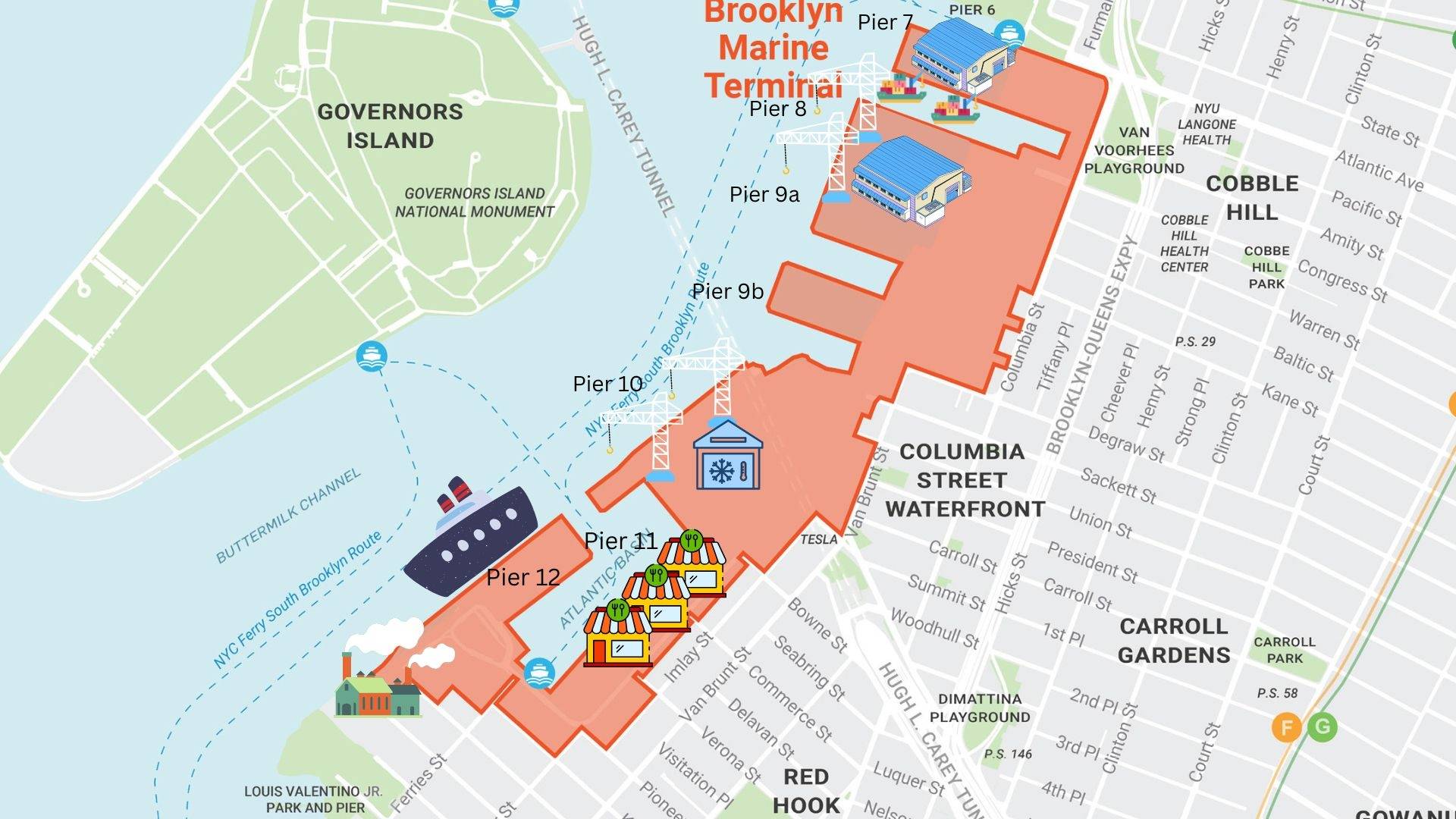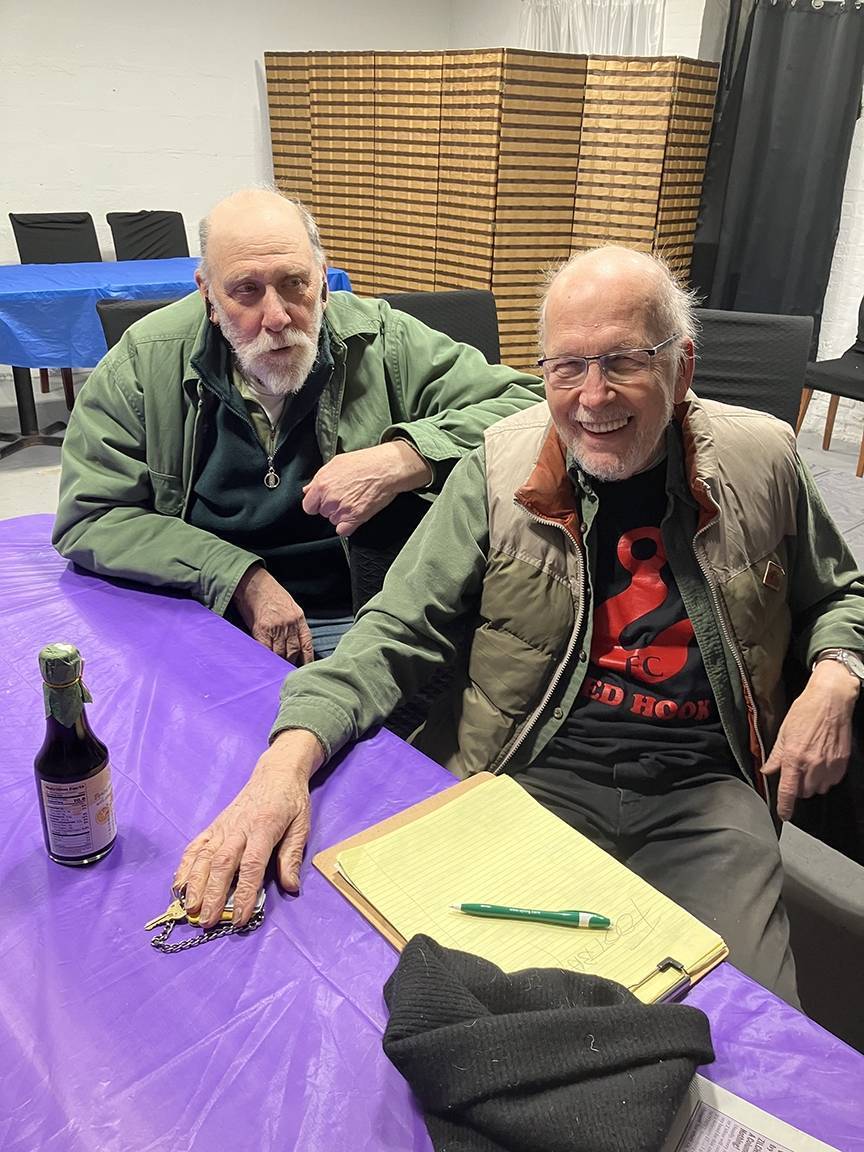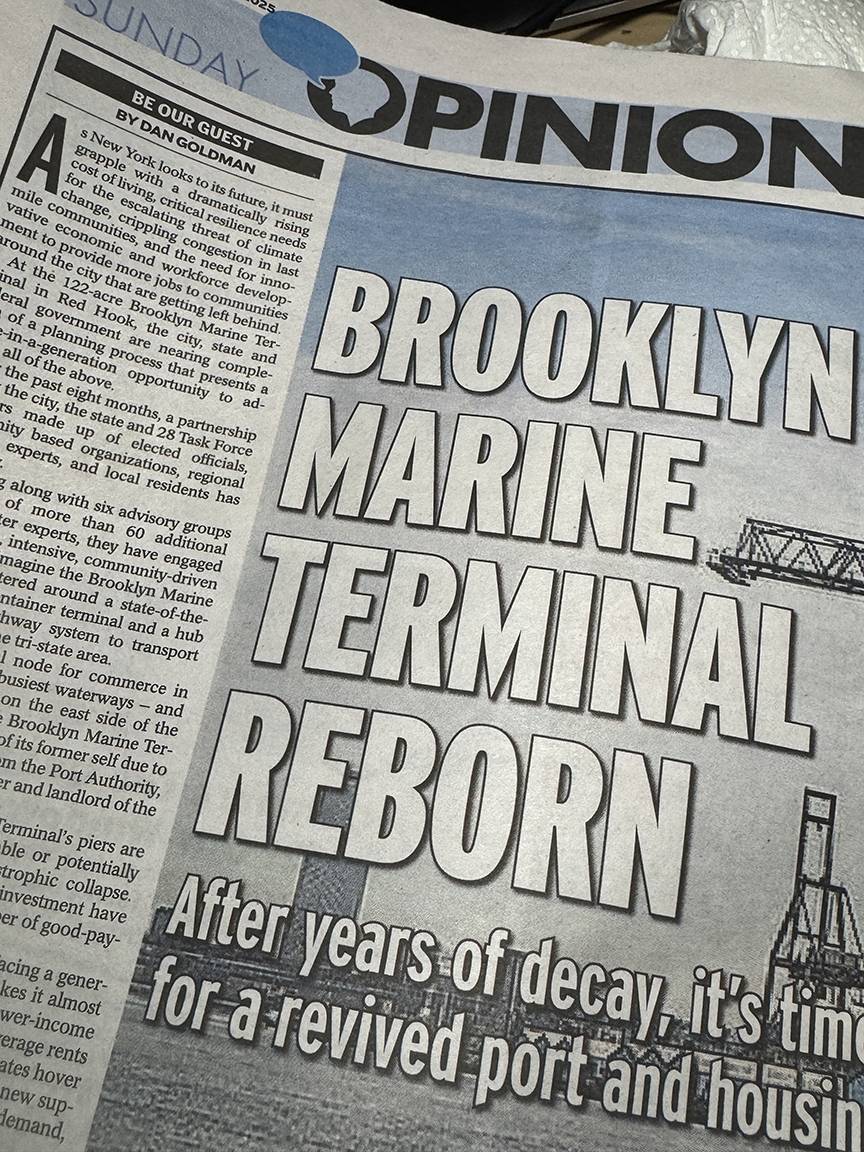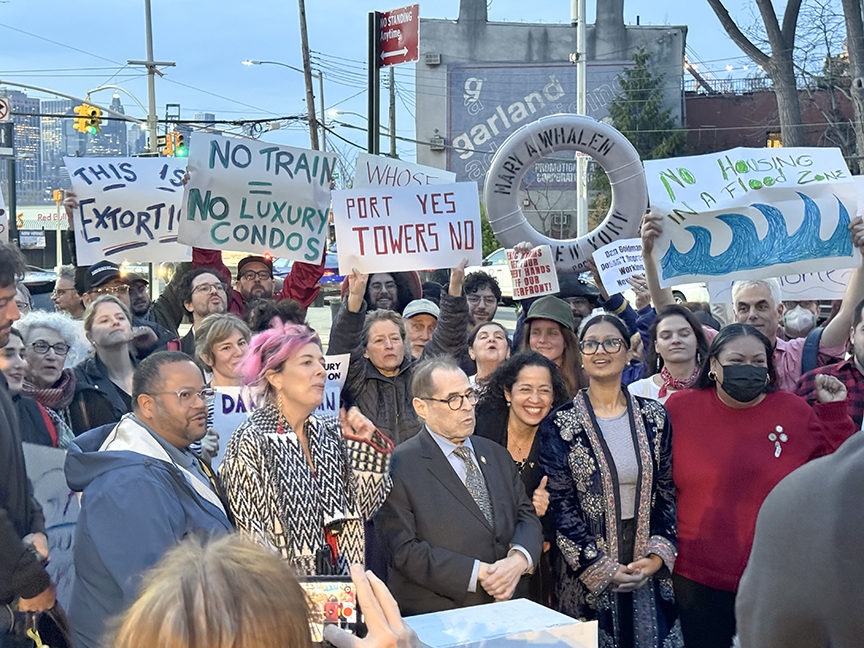EDC claims only housing can pay for “the port of the future.” There are other options.
Later in April, the Brooklyn Marine Terminal task force is set to vote on a vision plan for the massive redevelopment of New York’s last working waterfront. In the last few months, the New York City Economic Development Corporation (EDC) — which is leading the project on behalf of the City — has remained adamant that luxury housing is the only way to pay for the exorbitant costs, based on EDC calculations, renovating the port will incur.
But are market-rate rentals and condos the only way to finance this redevelopment? Not necessarily. With the help of the publicly available numbers and information, trusted experts, and a little bit creativity, we came up with some options. (Note that the map is only for illustrative purposes, and the numbers are rough estimates; a feasibility study is required to fully investigate what alternate funding sources exist and how much they could generate.)

Warehouses:
$40-60 million/year
The Brooklyn Marine Terminal covers 122 acres of land, which equals to about 5.3 million square feet. Currently, buildings occupy 805,000 square feet, or a little more than 18 acres, for example on Piers 7 and 8 to the north and along the southern edge of the site. One way to make them generate income, is to turn them into warehouses, where companies like Amazon, UPS, FedEx, Costco, HelloFresh, Walmart and others could lease space. Typically at a site like this, annual rent for warehouse space is $20-40 per square feet and (commercial space on Van Dyke Street, for example, currently goes for $26 indoors and $36 outdoors). If an additional 850,000 square feet of warehouses were built — which there is plenty of room for — they could altogether generate $40-60 million every year to be reinvested into infrastructure upgrades at the site.
Jim Tampakis, owner of Marine Spares international, suggests that electrified Kuenz cranes (widely used by the New York Department of Sanitation on its waterfront facilities) on Pier 8 could unload containers from barges, before they’re moved into a sorting facility on Pier 7 where packages are broken up into sections for different tenants. The packages are then sent back out on the water in smaller boats to hubs along the city’s waterfront as part of the Blue Highway Initiative. (Appropriate technology and space for companies like Amazon and UPS to use the water for moving packages through the city, would take trucks off the streets, reducing both traffic and pollution in Red Hook the Columbia Street Waterfront District.)
Pier 9b and 10: Red Hook Container Terminal
The Red Hook Container Terminal (RHCT) currently uses about half of the site’s 122 acres — 65 acres — for it’s operations. In this hypothetical scenario, RHCT would be allowed to expand its operations from Pier 10 onto a repaired Pier 9b. With a cold storage facility, RHCT could store produce and other fresh and frozen goods on-site, instead of having to ship it to cold storage facilities on the other side of the New York harbor. This would save money and reduce truck traffic, as the goods could be sent directly via barge up to Hunts Point in the South Bronx.
Pier 11: Food hall — $525,000-765,000/year
A common complaint among community members is that Red Hook doesn’t benefit much from the thousands of travelers that come to the neighborhood every year via cruise ship, because as soon as the tourists get here, they take an Uber or taxi to Manhattan. However, letting a company like Time Out, which already has a food hall in Dumbo (as well as in cities like Chicago, Lisbon and Osaka), set up shop on Pier 11 could make Red Hook more attractive for visitors to remain in. The numbers, $525,000-765,000, is an estimate of how much Time Out could lease the space for, based on what commercial space usually rents for per square foot in the area, if the company wanted a space the same size as its Dumbo venue.
Pier 12: Brooklyn Cruise Terminal – $2.5 million/year
Right now, Red Hook receives none of the revenue generated by EDC from the Brooklyn Cruise Terminal. This stands in contrast to the Manhattan Cruise Terminal, where the Hudson River Park Trust receives 20% of EDC’s net revenue. If the same deal was in effect in Red Hook, about $2.5 million could be reinvested in the new BMT. EDC’s revenue from the Brooklyn Cruise Terminal has also significantly grown post-covid, meaning even more money could potentially come Red Hook and the marine terminal’s way.
Online delivery fee: $228 million/year
Imagine you go to Amazon to order a new bike helmet for your child. While you’re at it, you add to your basket some paper towels, a new lamp and a blanket for your cat. Your total ends up at $106. When you go to check out, you see that added to the final price is a 25-cent online delivery fee. Would it bother you? Probably not — after all, its just a quarter. A fee like this was proposed by State Sen. Andrew Gounardes in 2023 (the bill is currently in Senate Committee). Similar fees exist in Minnesota, where a 50-cent fee is applied to some retail deliveries, and in Colorado, where a fee is collected on all items subject to state sales or use tax.
Now, consider if this 25-cent fee is applied to all of the 2.5 million packages that are delivered in New York City every day. Suddenly, the City could receive as much as $228 million in online delivery fees every year. While it is unlikely that all of this would go back into the Brooklyn Marine Terminal, given the its key role in the Blue Highway system, it could be possible to earmark some of the money for investment in the port.
UPS site: Park and light manufacturing
It remains unclear whether the UPS site, which sits south of the BMT, would be a part of the vision plan. While it sits vacant, the city would still have to make a deal with UPS to either buy it or trade it for something, like warehouse space at the marine terminal. If the site is acquired, the approximately 600,000 square feet of land could be used for a variety of things. Potentially, Valentino Park could be expanded north to cover half of the UPS lot, and the rest could be used for things like light manufacturing.
Author
-

I’m a New York-based journalist from Sweden. I write about the environment, how climate change impacts us humans, and how we are responding.
View all posts
I’m a New York-based journalist from Sweden. I write about the environment, how climate change impacts us humans, and how we are responding.









